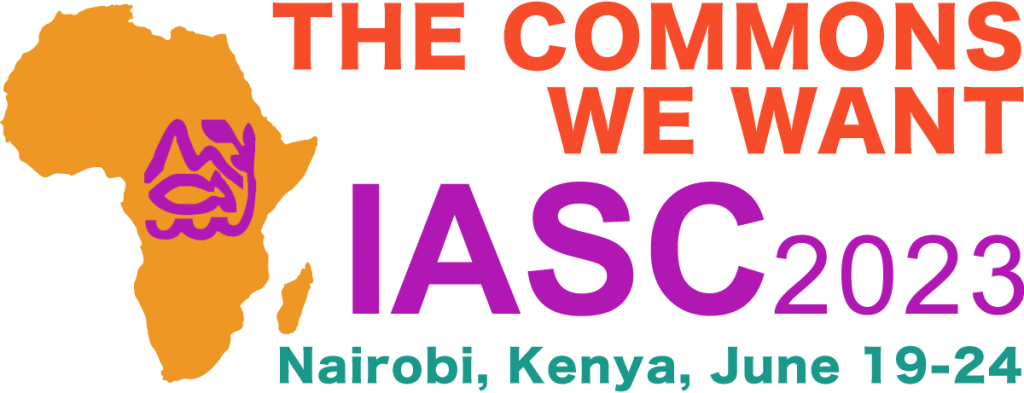Sub-theme 11. Advances in Frameworks and Theory
11.7.
Towards standardizing case studies in commons scholarship: a collective deliberation
A big challenge in commons scholarship is the relative absence of a database collating diverse SES case studies in a standardized manner. Initiatives such as the SESMAD, CPR database, and IFRI have pushed frontiers in this regard, however, they remain challenged in terms of the diversity of cases they incorporate, participation of researchers in the endeavour, and standardization of variables used to describe the cases.
Parallelly, early career scholars working in the field of social ecological systems sciences face a different challenge – they possess in-depth knowledge about individual cases that they are studying but cannot publish from them until they have sufficient training to make use of cases to advance theory or concept.
This panel draws on preliminary conversations between representatives of the early career network of the IASC (IASC-ECN), editors of the International Journal of the Commons, and representatives of the In Common Podcast towards building a corpus of standardised case studies while providing peer reviewed publishing avenues that build confidence amongst early career researchers. Doing this however requires in depth conversations about what constitutes a case study, what perspectives and variables to include, how the data so collected may be used, and overall data sovereignty. We thus invite fellow scholars to engage in conversation aimed at co-produced identification of variables for standardization and developing appropriate protocols to address data driven challenges. The end objective is to coalesce towards a specialized case study section within the International Journal of the Commons and an associated database of variables within the In Common Podcast’s web interface.
- June 21, 2023
- 11:00 am
- Room MLT 405
1. Advancing diagnostic approaches towards systematically studying SES transformations.
Hita Unnikrishnan1 and Maria Katharina Gerullis2
1The University of Sheffield, UK, 2Cornell University, USA
The social-ecological systems (SES) framework (Ostrom 2009) typologically decomposes SES characteristics into nested, tiered constituent variables. Yet, aligning the framework’s concepts of resource system (RS) and resource unit (RU) with realities of individual case studies pose challenges if the underlying SES is not a single RS, but mid to large scale nested RS (NRS). In a recent paper (Unnikrishnan et al., forthcoming), we have, using a diagnostic approach, described NRSs – and the activities and networks of adjacent action situations (NAAS) containing them. An NRS includes the larger RS and multiple interlinked semi-autonomous subsidiary RSs, each of which support simultaneous, differently managed appropriation of individual RUs. We have further identified NAASs operating within NRSs in two diverse empirical cases – networks of lake systems in Bengaluru, India and German wheat breeding systems- representing a lever towards understanding transformation of SESs into sustainable futures. In furthering this agenda of unpacking and diagnosing complexities within mid to large scale RSs and their governance, we now expand our diagnostic approach towards unpacking complexities within the remaining two components of the SESF namely Governance Systems and Actors. In so doing, we provide a generalizable, rigorous approach to SES case study analyses, thereby advancing methods for synthesis in sustainability science.
2. A meta-analysis of SES framework case studies: identifying dyad and triad archetypes
Stefan Partelow
Leibniz Centre for Tropical Marine Research (ZMT), Germany
Case studies on collective action in social-ecological systems (SES) have tended to identify a broad range of variables which come in complex configurations. Can this complexity be better understood as compartmentalized groupings of smaller archetypal models? If so, are two and three independent variable groupings (dyads and triads) the optimal model size for building theories of social-ecological interaction? This would advance commons and SES theory beyond the listing of single independent-dependent variable relationships. We analyze interactions among independent variables and how they relate to positive or negative social or ecological outcomes. Our data comes from 71 social-ecological system outcome models generated from the qualitative coding of empirical case studies using the SES framework. We use hierarchical clustering, principal component analysis, and network analysis tools to identify the frequency and recurrence of dyads and triads across clusters and outcome groups. The most frequent dyads and triads include Actor variables (Leadership, Norms/social capital, Knowledge of SES, Importance of resource) and Governance (Property rights, Operational rules, Collective choice rules) variables. We do not observe a relationship between model size or composition to model outcomes (i.e., positive social, positive ecological, negative social, negative ecological). Our data shows that there is little dyad and triad composition novelty as model complexity increases, supporting the idea that dyads and triads are for a good starting point to understanding more complex system models. More complex models are likely just interacting compositions of several more comprehensive.
3. The complexity problem of the Common-Pool Resources (CPRs). A comparative analysis of case studies of Mexican community forests by using E. Ostrom’s SES.
Eugene Hakizimana1 and Arturo Lara Rivero2
1Instituto Politécnico Nacional (IPN), México, 2Universidad Autónoma Metropolitana, México
Abstract: This paper studies complexity problem of CPRs by using the E. Ostrom’s SES framework. It uses a comparative analysis of case studies to show that successful cases share a common set of variables whose interaction and patterns of interactions result into good performance. To be able to identify the variables used in this study, SESMAD database and E. Ostrom SES were used. The results of this study show that: in a complex system like that of the forests, these are a set of variables which explain successful conditions in some cases and unsuccessful conditions in others, and poor outcomes is due misunderstanding of those variable interactions and their patterns of interactions.
Key words: E. Ostrom’s SES framework, complexity problem of Common-Pool Resources, variable interactions.

